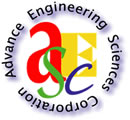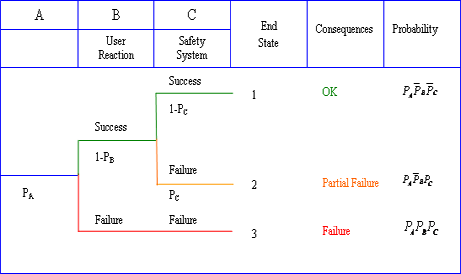| |
 |
|
Delivering Advanced Engineering Solutions |
|
|
|
|
|
|
|
|
As part of a comprehensive risk assessment and management service AESC offers its extensive experience in event tree analysis to a variety of clients, whose goals are to understand and mitigate risks due to accident progression.
AESC's staff takes advantage of event tree modeling technique as a systematic approach to accident progression studies, and prevention.
Event tree models are constructed to investigate physical processes for accident sequence groups, before and after an incident, and to map out all possible progression paths.
Accident progression scenarios are identified by including event tree branches with respect to events governing the circumstances of an accident.
This analysis yields listing of different outcomes for an accident progression, and conditional probability of each accident progression scenario.
Further analysis may be necessary that include consequence determination for the most severe and less than desirable outcomes.
Depending on severity of an accident outcome which may be determined by occurrence time, duration, and contributions to immediate and latent problems, a consequence is quantified using an event tree model.
We consult and apply industry guidelines, as in ISO 14971, and NUREG, for severity and consequence categorization.
At AESC we have extensive experience in developing stand alone event tree models, and combination of event tree - fault tree models for more complex accident progression scenarios.
Event tree model is a first step in developing a "Risk Graph". A risk graph is then used in determining safety integrity level (SIL) for a safety system. Determination of SIL is based on a probabilistic risk graph that is constructed using four parameters, "Consequence - C", "Exposure - F", "Probability of avoiding hazard - P", and "Likelihood of Event - W".
Simple event tree example:
|
 |
|
|
|
|
|
|
|